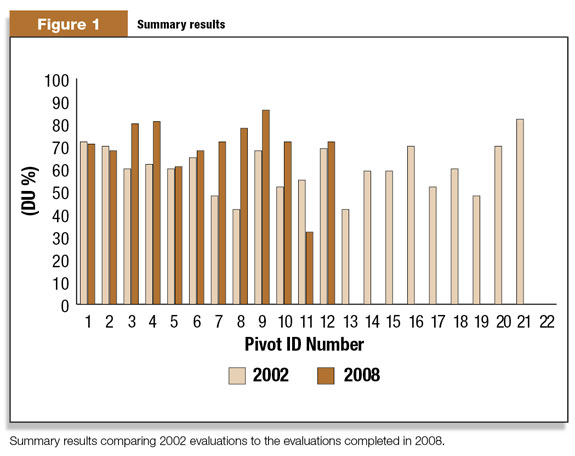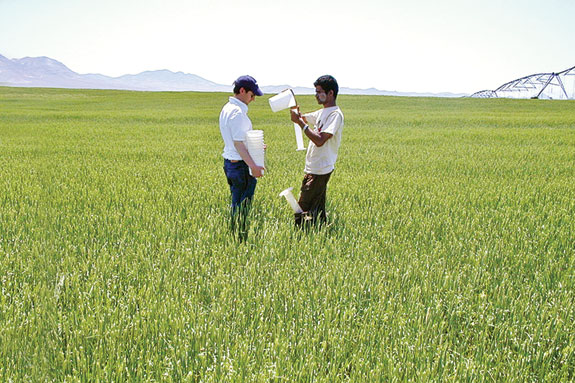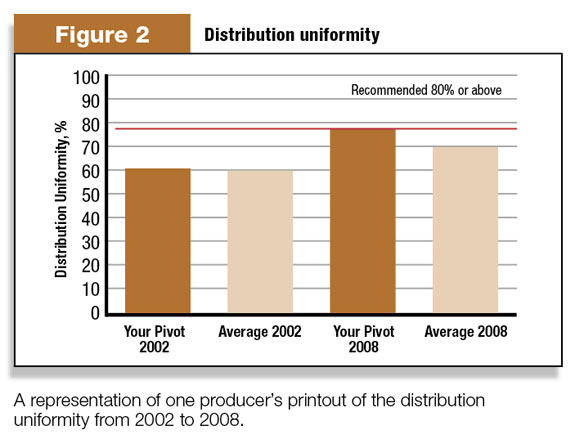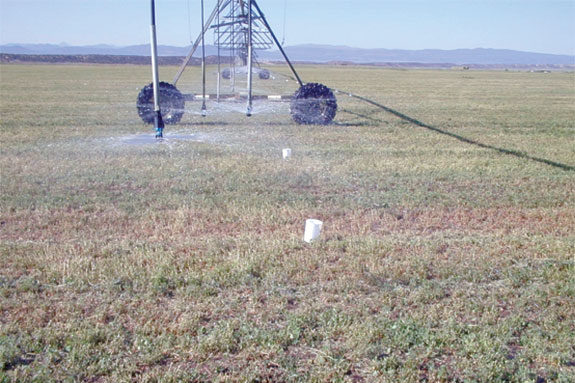Agriculture-related irrigation accounts for 80 percent of Utah’s presently developed water supply.
Improving irrigation efficiency may provide two major benefits to agriculture: increased agricultural productivity/profitability and improved water quality.
A good understanding of how water influences crop growth is needed for good water management.
Water is a very important resource in Beaver County, Utah. Just as in most Western states, there is not enough to meet demands.
Currently there are 36,590 acres irrigated in the county. Of these, 18,900 were irrigated by center pivots. Traditionally, flood irrigation has been the most-used irrigation system in the county.
In the last 30 years, 85 percent of the irrigation systems have been converted to sprinkler. Wheel lines have been used heavily throughout the county, but now many of them have been converted to center pivots.
We have found that many farmers lack understanding of irrigation techniques with these systems, which only reach top efficiency when managed properly.

Irrigation audits were conducted on 22 center pivot sprinkler systems throughout Beaver County in 2002 (see Figure 1).
Irrigation uniformity of the pivots varied from a low of 53 percent coefficient of uniformity (CU) to a high of 91 percent (CU).
We met with each producer and gave them suggestions on how to make their system more efficient.
We found that some of the farmers were running their pivots too fast, thus not applying enough water in each pass over the field.
In the six years since this evaluation, several things have changed in Beaver County.
The number of pivots in the county has increased 30 percent. The price of fuel has more than doubled for planting and harvesting crops. Electrical costs for pumping irrigation water have also increased and it has become more difficult and more expensive to hire farm workers.
Methods
The pivot evaluations were conducted by students from Utah State University under the direction of USU Extension irrigation specialist Dr. Bob Hill.
Catch cups were placed at 20-foot intervals on a line from the center to the outside edge of the pivot. The distribution uniformity (DU) and coefficient uniformity (CU) were calculated for each pivot.
A value of 100 percent would represent a pivot that was applying exactly the same amount along its entire length. After the pivots were evaluated each producer was give a printout that listed the pivot pressure, flow rate, average catch, DU and CU.
Results
Nine of the 12 pivots which were evaluated both years show an increase in distribution uniformities, six of which showed increases over 17 percent (Figure 2).
Of the three pivots which showed a decrease, two decreased by 2 percent or less.
A DU value of 80 percent or greater is preferred. The DU values have increased from 61 percent on average in 2002 to 70 percent in 2008. This increase, on average may save $1,745 per pivot per season.
Summary
75 percent of the pivots which were evaluated both years showed an increase in distribution uniformity. Farmers can save up to $1,745 per pivot per year by running them more efficiently.
Farmers can improve the uniformity efficiency by changing the sprinkler heads regularly. This followup irrigation study shows that 75 percent of the farmers improved the way they were operating their center pivot as a direct result of our evaluation program. FG
PHOTOS:
TOP: Catch cans are placed under the pivot to measure distribution throughout the field.
MIDDLE: Utah State University graduate students measure the amount of water collected under the pivot. Photos courtesy of Mark Nelson.














